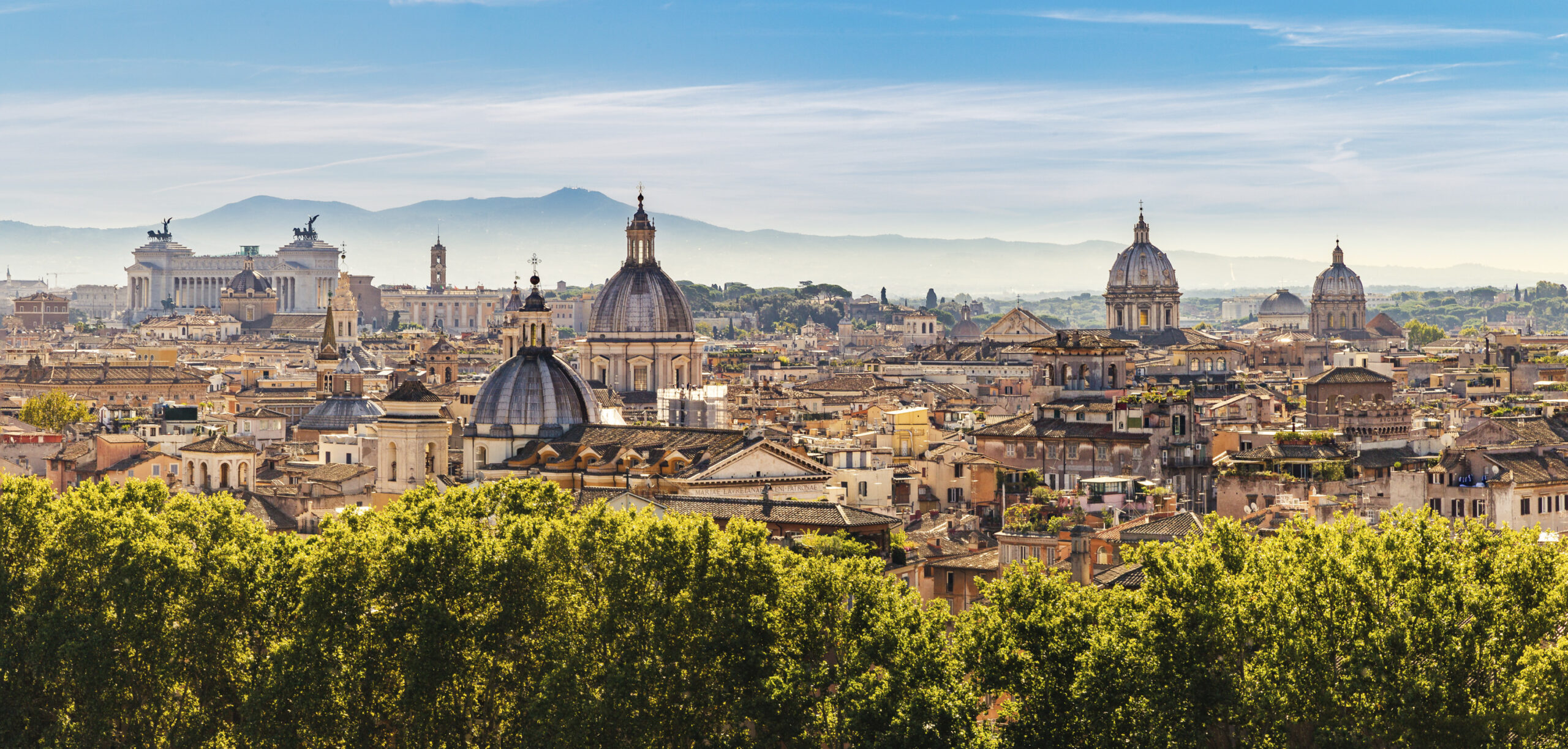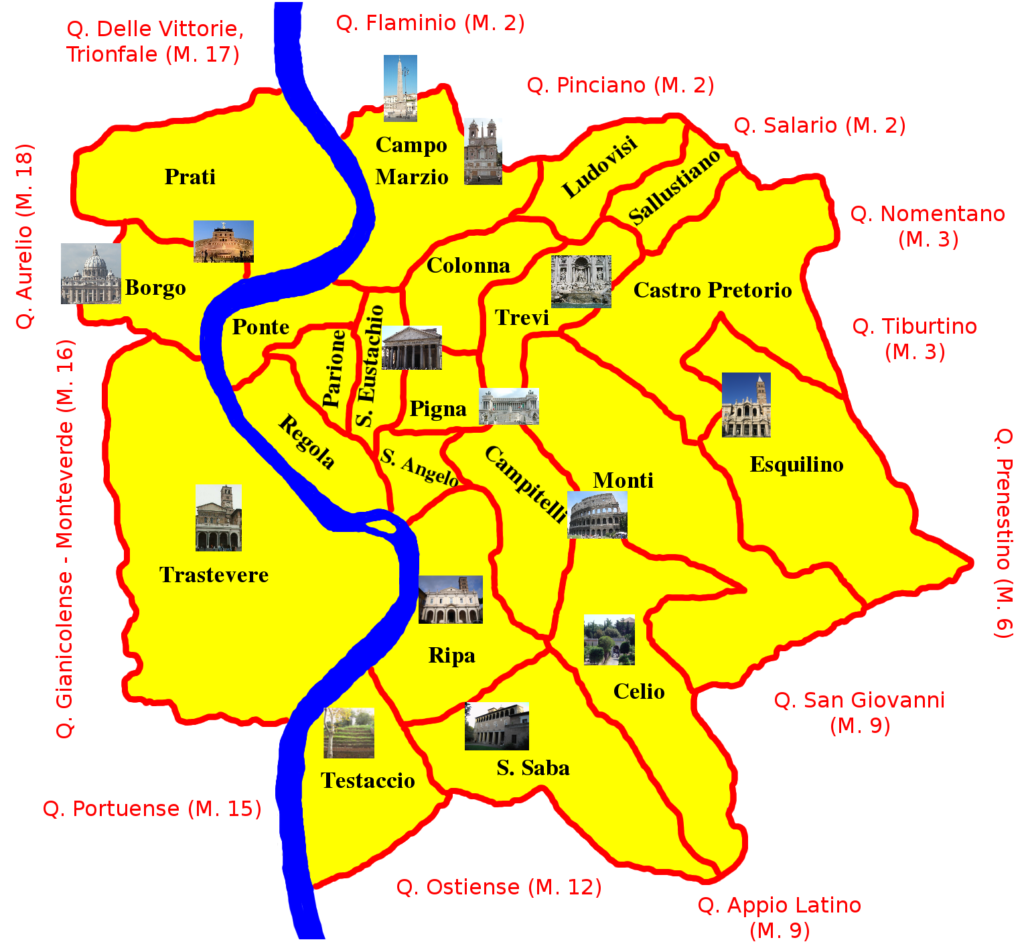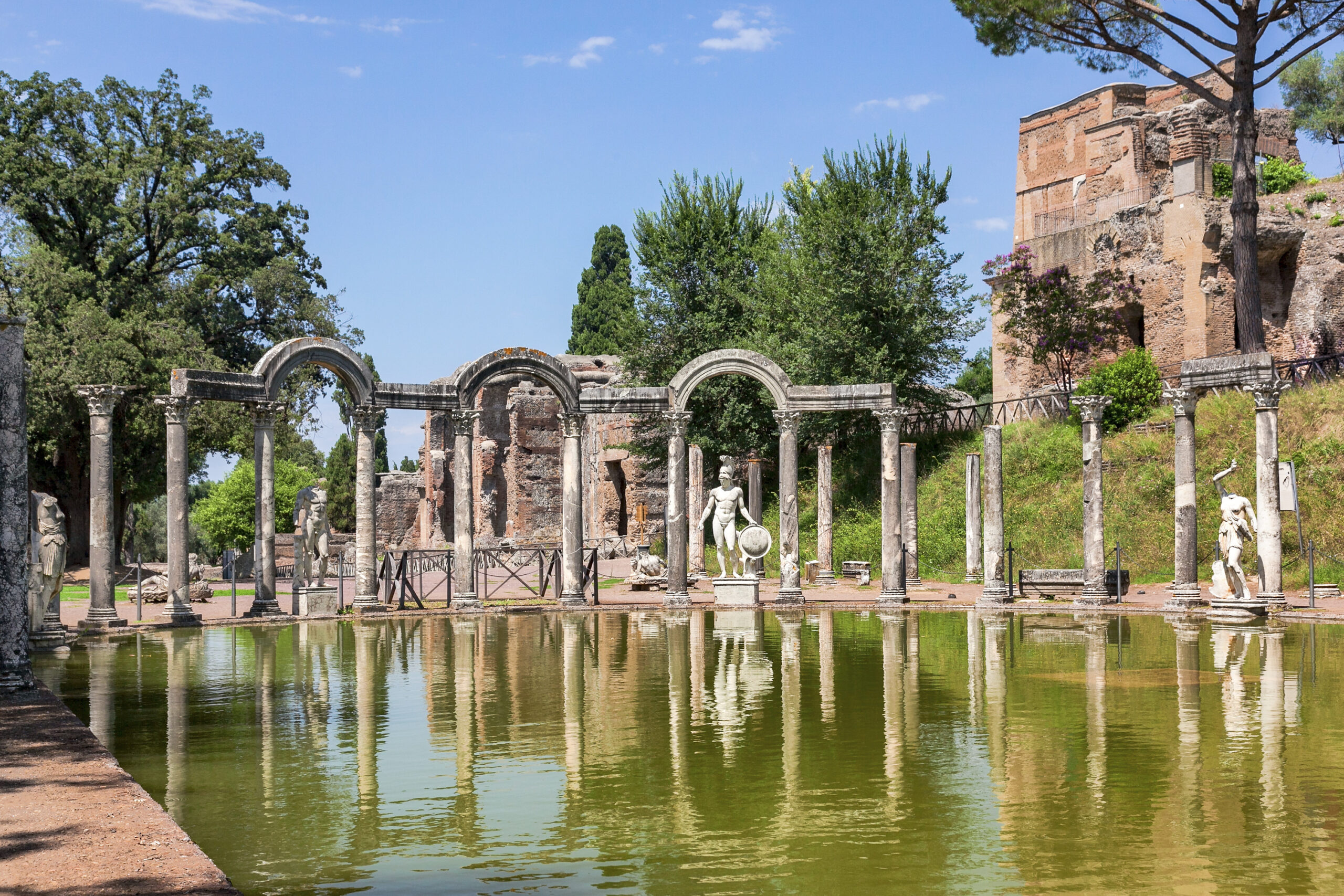
Geography of Rome: Between the Glittering Tiber and the Seven Historic Hills
Discover the fascinating geography of Rome, a city whose millennial history is intimately linked to its unique landscapes. Located on the famous seven hills and crossed by the majestic Tiber, Rome offers a topography as rich as its cultural heritage.
This page takes you to the heart of Roman geography, explaining the historical importance of its hills, the impact of the Tiber on its development, and how these geographical elements shaped the Eternal City as we know it today. Explore Rome from a new angle and better understand what makes it such an exceptional city.
The historical heart of Rome: a privileged geographical location
The Tiber
This iconic river is more than just a body of water: it's a refuge during the hot Roman summers.
The Tiber, the third longest river in Italy at 405 kilometers, is the beating heart of Rome, having shaped its history and development. Crossing the city, it separates historical districts, such as the Vatican and Trastevere, from other parts of the city. Laden with legends, it was on its banks that Romulus and Remus were found, marking the beginning of the legendary founding of Rome. Over the centuries, the Tiber has witnessed great battles, sacred rituals, and today remains an inseparable symbol of the Eternal City, connecting past and present.
Looking for a unique way to explore it? Discover the best Tiber cruise deals.

Did you know? The Tiber has often overflowed its banks, causing devastating floods in the city of Rome. One of the most important occurred in 1870, just before Rome became the capital of Italy.
The Seven Hills of Rome
- Palatine: The legendary cradle of Rome, the Palatine is where Romulus is said to have founded the city, overlooking the Forum and offering fascinating imperial remains.
- Capitoline (Capitolin): Seat of religious power in Antiquity, the Capitoline today houses the Capitoline Museums and the famous equestrian statue of Marcus Aurelius.
- Aventine: Residential and peaceful, the Aventine is known for its gardens, Santa Sabina Church, and the unique view of St. Peter's Basilica through the keyhole.
- Caelius: Rich in Christian history, the Caelius is dotted with ancient basilicas, including that of San Giovanni in Laterano, the cathedral of Rome.
- Esquiline: The largest of the hills, the Esquiline is home to the basilica of Santa Maria Maggiore and the remains of the Trajan's Market.
- Viminal: The smallest of the hills, the Viminal is now an administrative district, home to the Ministry of the Interior and the Rome Opera.
- Quirinal: Dominating the city, the Quirinal is the site of the Italian presidential palace, and offers a rich history linked to ancient Roman temples and baths.
Do you know their historical significance? Each of these hills is an open book on the past, rich in anecdotes and architectural wonders. For a deep immersion, consider booking your guided tour of the Palatine Hill.
What are the main districts of Rome?
Rome is divided into several districts (rioni) and areas, each with its own character and unique attractions.
- Centro Storico: The historic heart of Rome, filled with iconic monuments like the Pantheon, Piazza Navona, and medieval alleys.
- Trastevere: A bohemian and picturesque district, famous for its cobbled streets, ancient churches, and lively nightlife.
- Vaticano (Borgo): The district that houses the Vatican, with St. Peter's Basilica, the Vatican Museums, and the Sistine Chapel.
- Monti: A trendy district near the Colosseum, known for its artisan shops, trendy restaurants, and artistic atmosphere.
- Testaccio: A former working-class district that has become the center of Roman gastronomy, famous for its food market and nightlife scene.
- Esquilino: A multicultural district around Termini station, with a large international community, the Esquilino market, and the Basilica of Santa Maria Maggiore.
- Campo de' Fiori: Known for its open-air market and historic square, surrounded by lively cafes and bars.
- Prati: An elegant district near the Vatican, with wide avenues, fashion boutiques, and chic restaurants.
- San Giovanni: A residential district with the Basilica of San Giovanni in Laterano, the cathedral of Rome, and the Via Sannio market.
- Aventine: A quiet residential district, offering green gardens, ancient churches, and stunning city views from the Orange Garden.
- Celio: Located around the Colosseum, this district is home to ancient ruins, historic churches, and the park of Villa Celimontana.
- Pigneto: An alternative and trendy district, known for its art scene, cafes, and trendy bars.
- Parioli: An upscale residential district, with wide boulevards, embassies, and the nearby park of Villa Borghese.
- Flaminio: A cultural district home to the MAXXI (museum of contemporary art), the Auditorium Parco della Musica, and the Flaminio Stadium.
- Garbatella: A residential district built in the 1920s, known for its unique architecture, quiet squares, and village atmosphere.
- Nomentano: Close to La Sapienza University, it's a lively district with cafes, bookstores, and parks like Villa Torlonia.
- San Lorenzo: A dynamic student district, known for its lively nightlife, artistic graffiti, and bohemian atmosphere.
- Ostiense: An industrial district in full transformation, with museums like Centrale Montemartini, restaurants, and the Testaccio market nearby.
- EUR: A modern district built in the 1930s, with monumental Fascist architecture, offices, and green spaces like the EUR lake.
- Trieste: An elegant residential district with Art Nouveau villas, chic cafes, and the Villa Ada park, a large green space.
- Tiburtino: A popular district with an authentic atmosphere, local markets, and historical links to the labor movement.
- Portuense: Located south of Trastevere, it's a quiet residential district, close to the green zone of Villa Doria Pamphili.
- Appio-Latino: A residential district near the Appia Antica, with historical sites like the catacombs of San Callisto.
- Monteverde: A green residential district west of Trastevere, with panoramic city views from the Villa Doria Pamphili park.
- Torrevecchia: A residential district in the northwest suburbs, characterized by modern buildings and green spaces.
- Tor di Quinto: Located north of the city, this district is known for its sports clubs, restaurants on the riverfront, and surrounding nature.

What is the size of Rome compared to other European capitals?
Rome is one of the largest European capitals in terms of area, covering about 1,285 km². Rome has about 2.8 million inhabitants, which is less than London or Berlin, but more than Paris. Its vast territory includes many green spaces and historical areas. Its size, combined with its historical richness, makes the city fascinating to explore, offering a unique blend of culture, architecture, and modern life.
The magic of Roman geography
Every corner of Rome is a celebration between lush nature and evidence of a grand civilization. Why wait to immerse yourself in this eternal city? Start your journey by discovering the must-see sights of Rome and be amazed by the secrets that Roman history has preserved.
Would you also like to learn more about the history of Rome? See our article dedicated to the fascinating history of Rome: A Journey through Time, from Remus & Romulus to the present day.
After exploring the wonders of the Tiber River and the hidden stories behind Rome's Seven Hills, what part of this timeless city intrigues you the most or is on your wish list to visit? Share your thoughts and your own experiences of Rome in the comments below!



